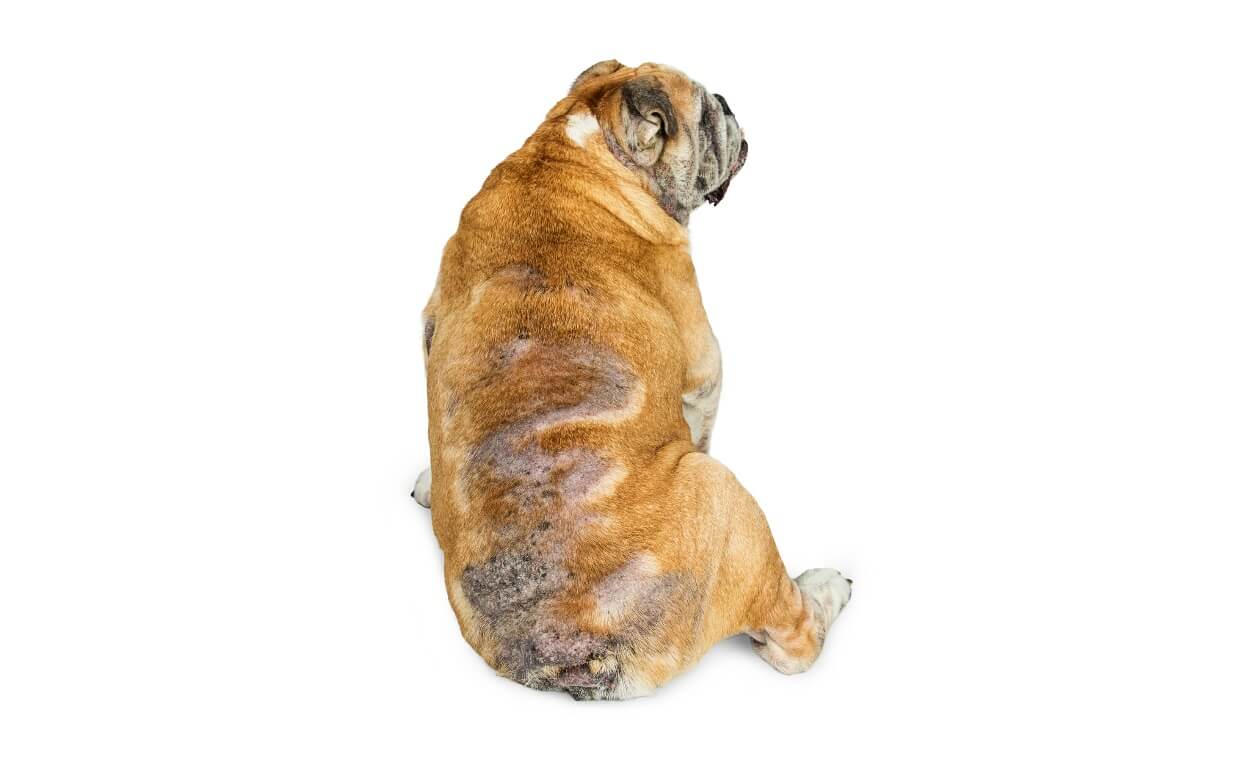
Hair loss in dogs is called alopecia. It can appear in a single spot, in patches, or all over the body. Usually alopecia occurs on the top of the head, belly, back and ears. In addition to bald patches, you might notice redness, crusting and swelling around the bald areas. Dogs with this condition tend to scratch and overgroom themselves.
Alopecia is fairly common and can affect all breeds, ages and both genders. Fortunately, treatment is usually successful.
Why Do Dogs Get Alopecia?
Alopecia occurs due to damage to the hair follicles, usually caused by trauma, inflammation, infection or a hormonal disorder. Understanding the cause of alopecia can help determine the treatment needed to help your dog get better.
Possible Types of Canine Alopecia
There are many different types of alopecia in dogs. Most of them are treatable with the correct medication. However, some conditions are more complicated. Here are some of the common types of alopecia in dogs.
-
Parasites
-
Mange mites
Mange mites are a common cause of hair loss in dogs. Both sarcoptic mange and demodectic mange can cause bald patches and areas of inflamed skin.
-
Fleas
Another parasitic cause of hair loss in dogs are fleas. Sometimes dogs will have an allergic reaction to fleas, called flea allergic dermatitis. An exaggerated reaction to flea bites can also be problematic for dogs.
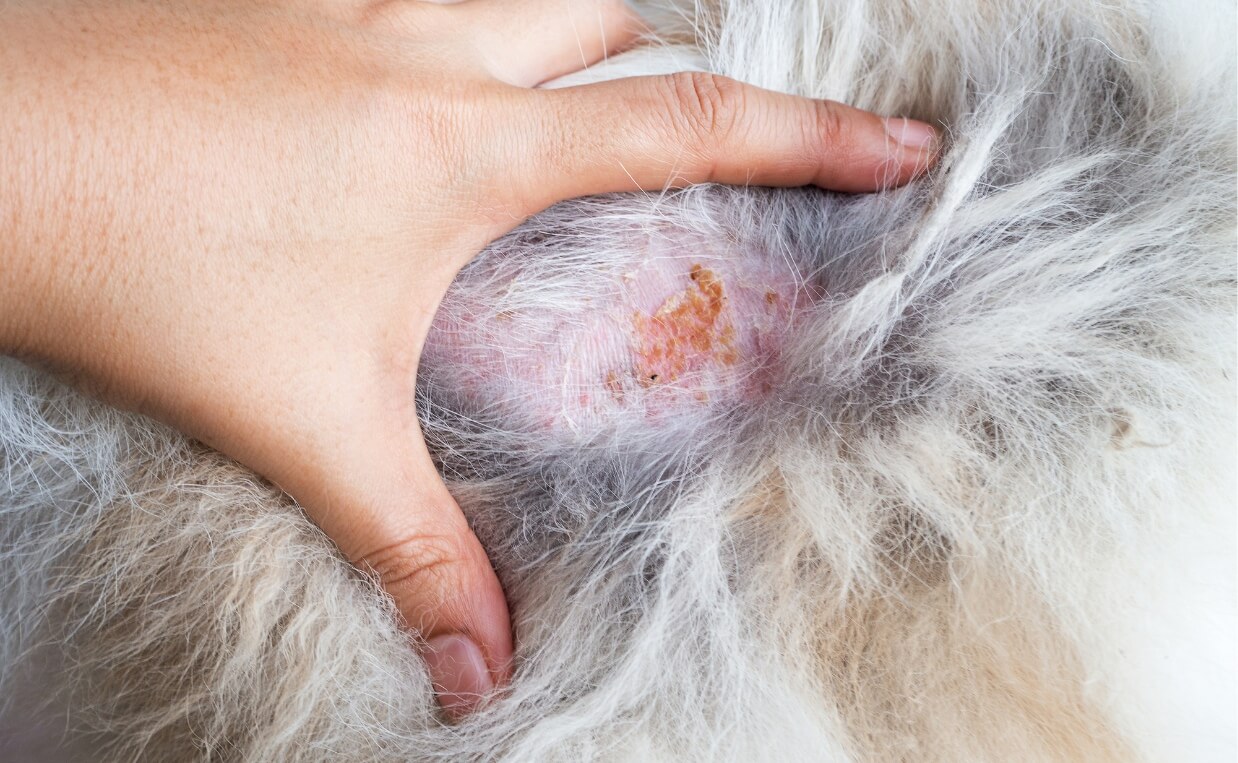
-
Bacterial or fungal infections
-
Bacterial infections
Bacterial infections can cause damage to the skin and hair follicles, leading to pyoderma. Pyoderma is a medical term for a bacterial skin infection. There are different types of pyoderma, which usually requires a cone, antibiotics and anti-itch medication.
-
Fungal infection
Fungal infections, such as ringworm, can cause hair loss as well as scaling or crusting of the skin. Ringworm is common in pets and is diagnosed based on a skin culture. Keep in mind ringworm is zoonotic, meaning humans can catch it from their pets.
-
Seasonal alopecia
Seasonal alopecia is a thinning or loss of fur, usually on one or both of a dog’s flank (the side of the abdomen, just in front of the rear legs). For this reason, it is called flank alopecia. It usually occurs in the winter; there is hair loss but the underlying skin is healthy. This condition is commonly seen in boxers, Doberman pinscher, and English bulldogs and is thought to be an underlying hormonal issue. Seasonal alopecia is on the surface; there is not an underlying health issue.
Since seasonal alopecia doesn’t cause pain or distress, veterinarians generally don’t recommend treatment. However, some claim melatonin can help.
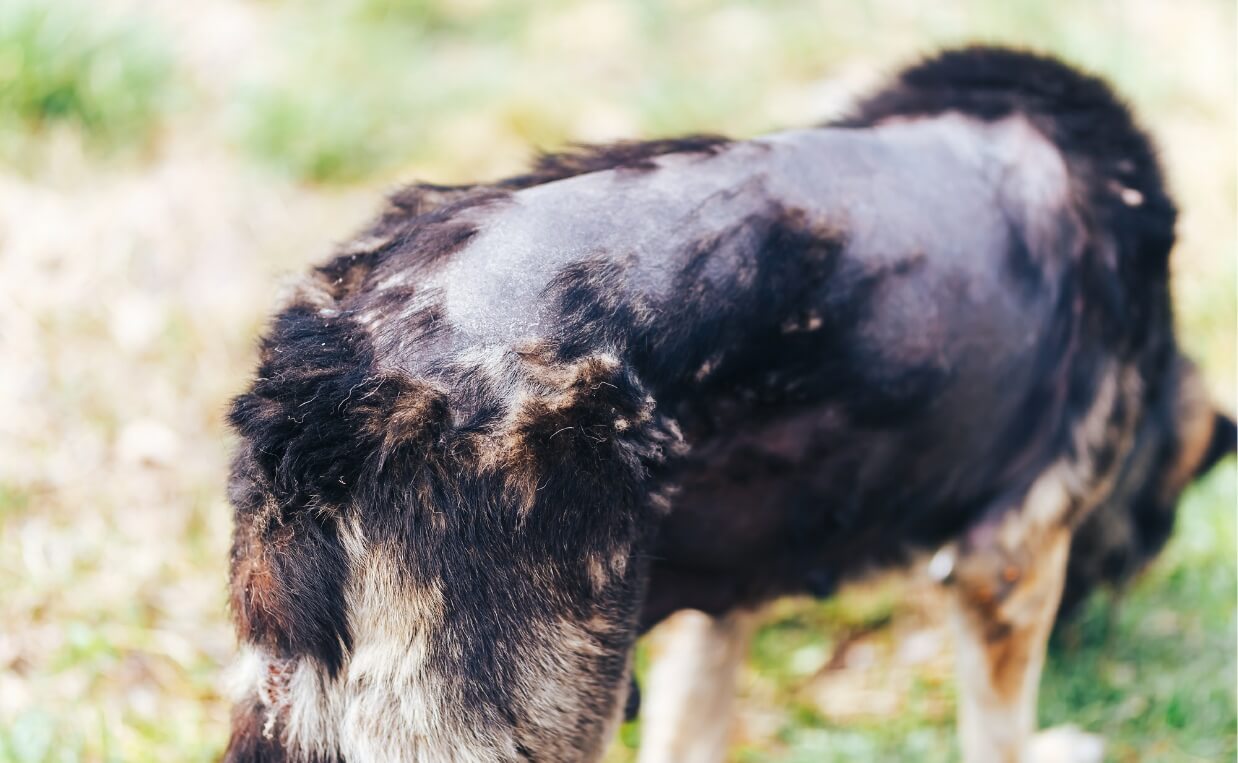
-
Alopecia X
Alopecia X usually presents as symmetrical hair loss. The skin may appear darker than usual too. This is cosmetic and doesn’t cause your dog any discomfort. The condition is rare; the cause is still unknown. It is possible alopecia X is most likely due to unbalanced sex hormone levels.
-
Skin reactions and trauma
Sometimes hair loss is caused by a reaction to topical treatments like flea medication. When this happens it can cause hair loss. Trauma caused by burns or scars can damage hair follicles, leading to bald areas.
-
Canine pattern baldness
Is your dog losing hair on his or her head? Just like humans, dogs can have pattern baldness. This type of alopecia happens in certain breeds, such as Chihuahuas, Boston terriers, Whippets, and bull terriers. Thinning of the hair on the temples, front of the throat and around the neck is common. There are no treatments for this type of alopecia, but it doesn’t cause the dog any discomfort.
-
Hormonal conditions
-
Endocrine hypothyroidism
Endocrine hypothyroidism can affect your dog’s coat, causing non-itchy symmetrical endocrine alopecia. This underproduction of thyroid hormones can cause other symptoms, too, such as weight gain and lethargy.
-
Cushing’s disease
Another hormone-driven cause of alopecia is Cushing’s disease. This is known as hyperadrenocorticism, caused by the overproduction of steroid hormones in the body.
Hyperadrenocorticism causes thinning of the skin, hair loss, a pot-bellied appearance, and changes in appetite and thirst.
Both hormone issues are diagnosed through blood tests and can be managed with medication.
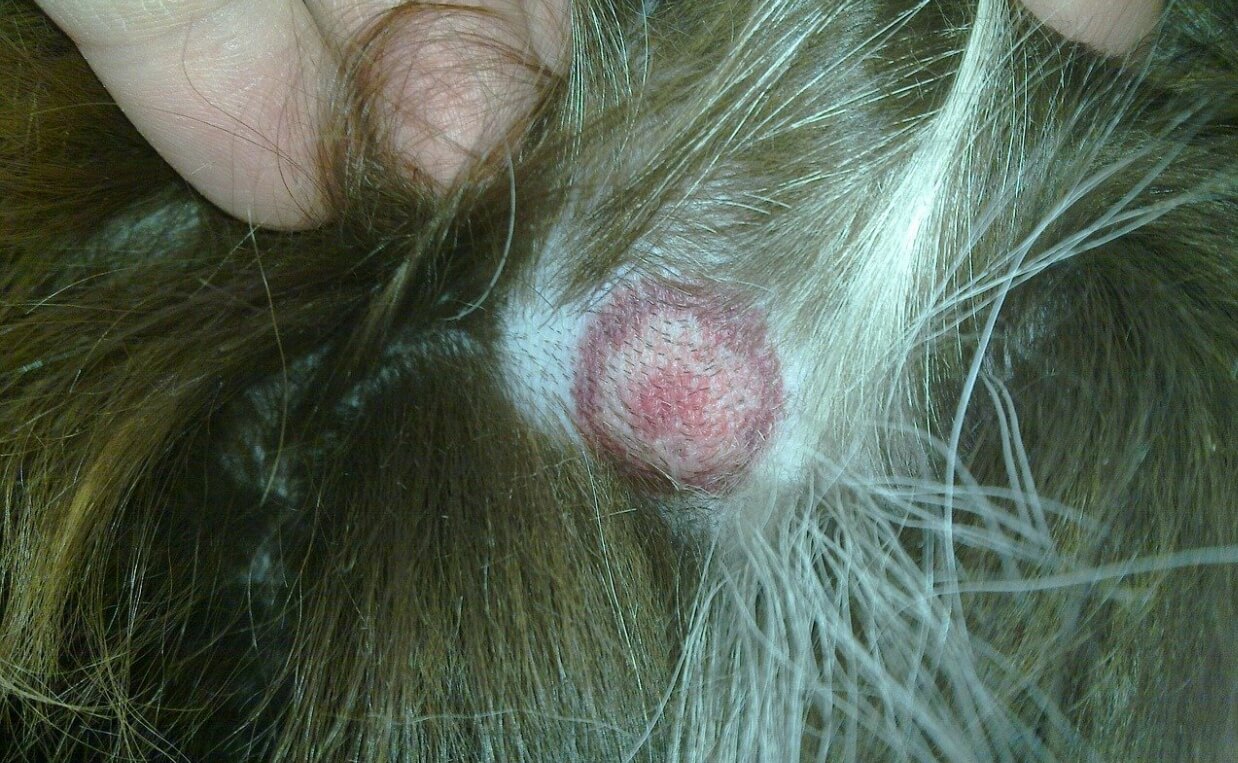
-
Testicular tumors
Sertoli cell tumors are not as common but are found in male dogs with retained (undescended) testicles. This condition is called cryptorchidism.
Cryptorchidism causes hormonal changes leading to alopecia, darkening of the skin, and enlargement of the mammary glands. Surgical removal of the testicles usually resolves symptoms.
How Canine Alopecia is Diagnosed
Your veterinarian will start by examining your dog’s skin and assess his or her overall health. This will give your veterinarian some clues about what condition your dog may be suffering from. Depending on the initial findings, other tests may be done, including a:
- Blood test
- Hormone test
- Skin sample
- Skin scrape
- Skin biopsy
Treatments for Canine Alopecia
The treatment for alopecia in dogs depends on the diagnosis.
-
Topical treatments
There’s no specific shampoo for canine hair loss. However, there are topical treatments designed to clearing up infections and helping to generally improve the condition of the skin.
-
Anti-parasite products
Your vet will prescribe an anti-parasite product if the cause of your dog’s hair loss is from a parasite.
-
Oral antibiotics
Oral antibiotics are generally required if Pyoderma (bacterial infections) are diagnosed. Topical treatments are needed as well.
-
Medication for hormonal conditions
If hormonal conditions are diagnosed medication will be needed. Animals with hypothyroidism and Cushing’s disease require ongoing treatment. Neutering is recommended for dogs with Sertoli cell tumors and may be helpful with alopecia X as well.
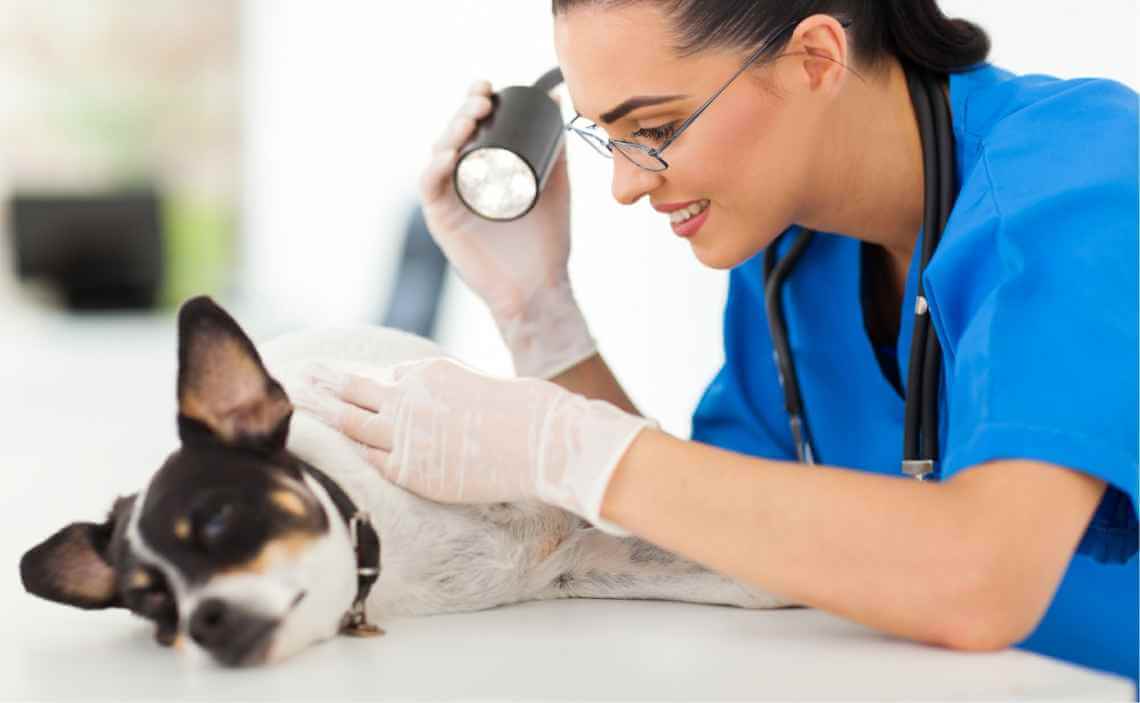
Are There Home Remedies for Canine Alopecia?
Since there are several different types of alopecia, with different underlying causes, home remedies should not be used. You should always have your dog seen by a veterinarian if your dog has hair loss. There’s no single home remedy for alopecia; only your vet can prescribe the correct treatment.
Can Canine Alopecia Be Stopped and Reversed?
In most cases, canine alopecia can be resolved, especially when diagnosed and treated promptly. Usually, resolving the underlying issue will address the hair loss and the fur will grow back.
Alopecia is harder to treat if the cause is alopecia X or canine pattern baldness. In these cases, your dog is not in any pain or discomfort, so he or she will not be concerned about it, even if you are.
Does Your Dog Have Other Skin Problems?
If your dog is suffering from a rash, itching, scabs or bumps? Dogs who suffer from a host of skin problem don’t always have hair loss. Sometimes the cause is an allergy or skin infection. Be sure to take your dog to the vet if he or she has the signs of an infection or ongoing skin problems.
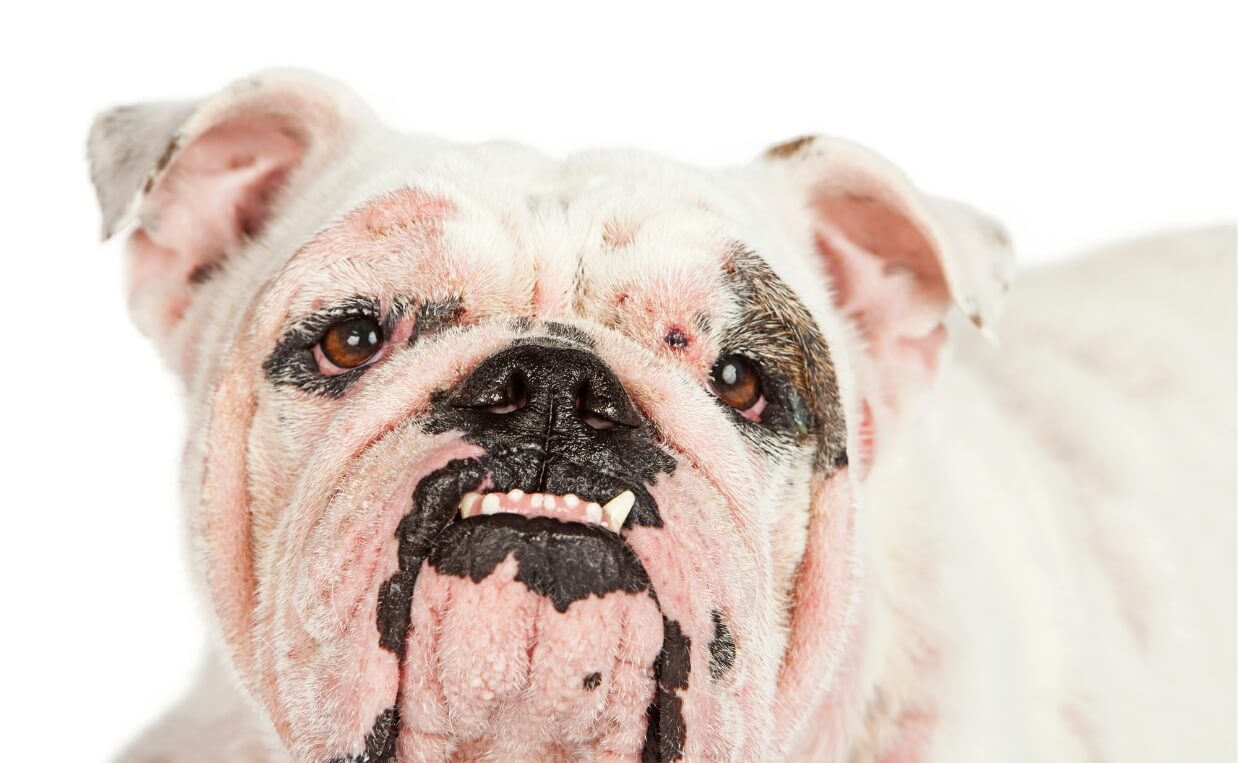
Final Thoughts
Don’t ignore hair loss in dogs, as it’s often an indicator of infection, parasites or another health issue. If your dog is shedding more hair than normal, or if the hair loss is accompanied by other symptoms, consult your vet to get a complete picture of your dog’s health.
Has your dog had hair loss? What treatment was required for your dog to get better? Please share your experience with the rest of the Canine Campus community by commenting below…

 5 Signs Your Dog Has Food Allergies
5 Signs Your Dog Has Food Allergies How to Recognize and Manage Cognitive Dysfunction in Aging Dogs
How to Recognize and Manage Cognitive Dysfunction in Aging Dogs 5 Reasons Your Dog Has Bad Breath
5 Reasons Your Dog Has Bad Breath Why Do Dog Teeth Get Worn Down?
Why Do Dog Teeth Get Worn Down? Is Nutmeg Safe for Dogs to Eat?
Is Nutmeg Safe for Dogs to Eat?






Leave a Reply